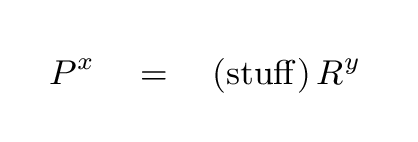
 Copyright © Michael Richmond.
This work is licensed under a Creative Commons License.
Copyright © Michael Richmond.
This work is licensed under a Creative Commons License.
There is a relationship between the size of a satellite's orbit around the Earth and the period of that orbit. Can you figure it out?

This relationship between the orbital period P and orbital radius R was first noticed and published by the German astronomer Johannes Kepler way back in 1619. It was one of his proudest achievements, and is now known as Kepler's Third Law.
Some of you may be wondering why this is such a big deal -- if you could figure it out in an hour or two, why couldn't Kepler, or any other astronomer of his day? Perhaps you don't realize that Newton's description of gravity hadn't been published yet; in fact, Newton wasn't born until 1643. Moreover, the kinematic and dynamic connections between forces, accelerations and velocities were not really worked out at this time....
This relationship isn't limited to motion around the Earth. You can use it for any situation in which a one body orbits a much more massive one (and, with a bit more work, use it even when the two bodies are of comparable mass).
 Copyright © Michael Richmond.
This work is licensed under a Creative Commons License.
Copyright © Michael Richmond.
This work is licensed under a Creative Commons License.